“Facebook is lame. Facebook is for old people. No one uses Facebook anymore.” — someone you know
You’ve probably heard this by now, a few times over, and it might be enough anecdotal evidence to skip focusing on Facebook as you grow your business’ affiliate marketing footprint. But we’re here to tell you to rethink that.
Why Facebook?
The death of Facebook has been greatly exaggerated. Worldwide, the social networking platform saw a 14% increase in Daily Average Users (DAU) and Monthly Average Users (MAU) quarter-over-quarter worldwide. And even though usage dropped in North America, as was widely-reported recently, that actual drop amounted to just 1 million DAU. When the site is averaging 184 million DAU, that’s barely a blip on the radar.
All that is to say that Facebook is still a juggernaut when it comes to interacting with consumers. While Instagram (owned by Facebook, by the way) is getting a lot of love from merchants and affiliates alike (check out our Instagram Guide here), companies looking to reach as many potential reps as possible shouldn’t ignore Big Blue. Here’s one key stat to chew on: the average Instagram user spends 24 to 32 minutes each day on the platform; on Facebook, it’s 27 to 41 minutes.
So no, you can’t just ignore Facebook altogether if you want the most eyeballs on your business. Especially if your products or services cater well to the 35+ audience, and also caters to the global market, Facebook remains a fantastic platform to engage in an affiliate marketing strategy. Let’s dive into how your business can leverage Facebook to find and manage your partners.
Finding Affiliates with Facebook

The advantage and purpose of using Facebook to find new affiliate partners is simple: you have a steady stream of visitors and fans who spend more time on this social network than they do on your company’s website. So not only do you have a larger audience, but a captive (relatively speaking) audience to pitch becoming a brand representative.
Of course, this strategy entails having a good Facebook page for your company (though there are ways around that; more on this later). Creating and maintaining a “sticky” presence on Facebook isn’t in the scope of this guide, but there are plenty of comprehensive posts that address this. For the purposes of this guide, we’ll assume you have a pretty decent company page where you:
- Engage and interact with fans (aka monitor and answer comments).
- Post useful, long-form content on a fairly regular basis.
- Employ strategy in what you post, when you post, and who you target.
Sound tough? Well these are generally table-stakes these days; the bare-minimum you need to do to stay relevant on the platform. It’s actually nothing you (or your social media manager) can’t accomplish by investing 1–2 hours a day. And then, you’ll have a great and growing Facebook presence to start converting fans into affiliates.
1. Build a Facebook-centric affiliate landing page
Now that we’ve successfully convinced you to invest more time into Facebook, priority number one is… not actually on Facebook! That’s because while the social network is a great lead generation tool as you search for affiliate partners to work with, you need a great affiliate landing page to actually convert your Facebook traffic into signing up. After all, none of the effort you put into gathering users will mean anything if you have no way of converting them.
While you may already have an affiliate landing page that can work with your Facebook traffic, here are some elements to consider to make sure this page is optimized for this specific channel:
Summarize your business:
While undoubtedly many of your fans and customers will click through your Facebook posts to your affiliate landing page, it’s also likely that you’ll have traffic that only knows your brand from a single Facebook post. Don’t assume the traffic landing on your page knows all the ins-and-outs of what your company offers.
This is a common mistake! Many companies put up a post about “becoming an affiliate” and take them to a landing page that is just a plain white form:
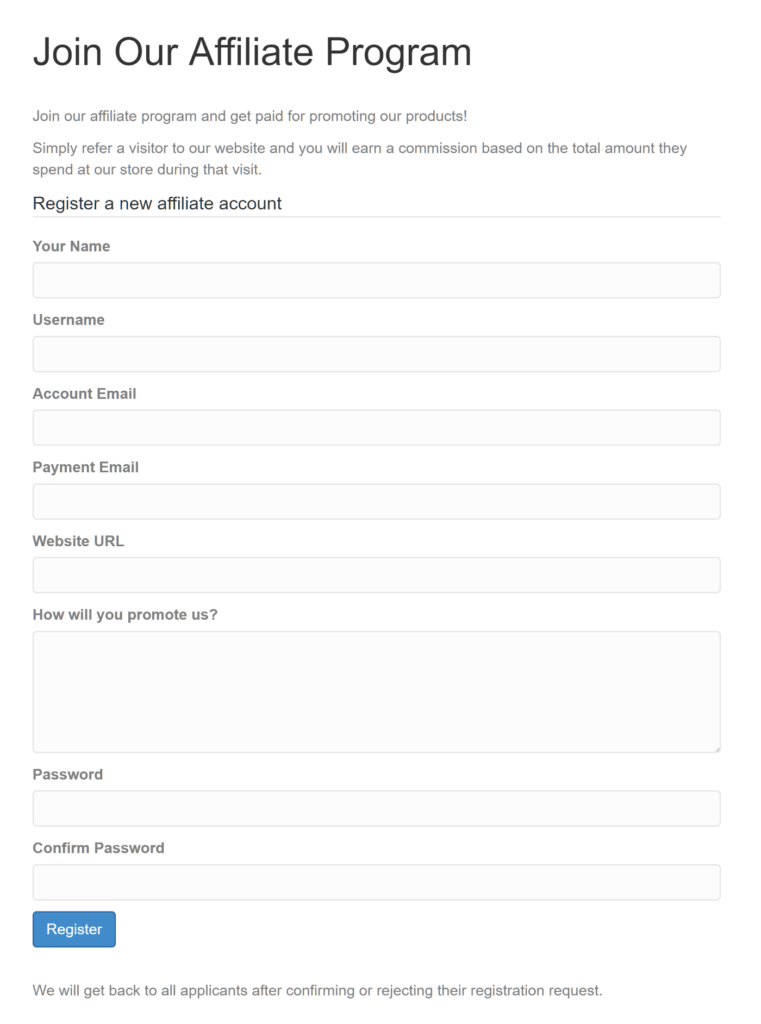
Sure, the form looks fine, but there is nothing about their company or even the offer. In contrast, TOMS’s affiliate sign-up page does a good job of conveying who they are and what they do:

It’s easy to read, informative, and fairly brief. While this page could use an image, the two-paragraph summary on the right is a great example of what you want to aim to have on your landing page.
Use the same image and language.

Like the example above, it’s good practice to use the same image as your post on Facebook telling the visitor about your affiliate program. When they see the direct connection on the landing page, it adds credibility and less confusion, which will increase conversion rates.
Know your Facebook demographics.
Remember how everyone was upset that Facebook knows too much about your personal information? Well you might as well leverage it. If you maintain a business page on Facebook, you’ll get access to “Insights”:
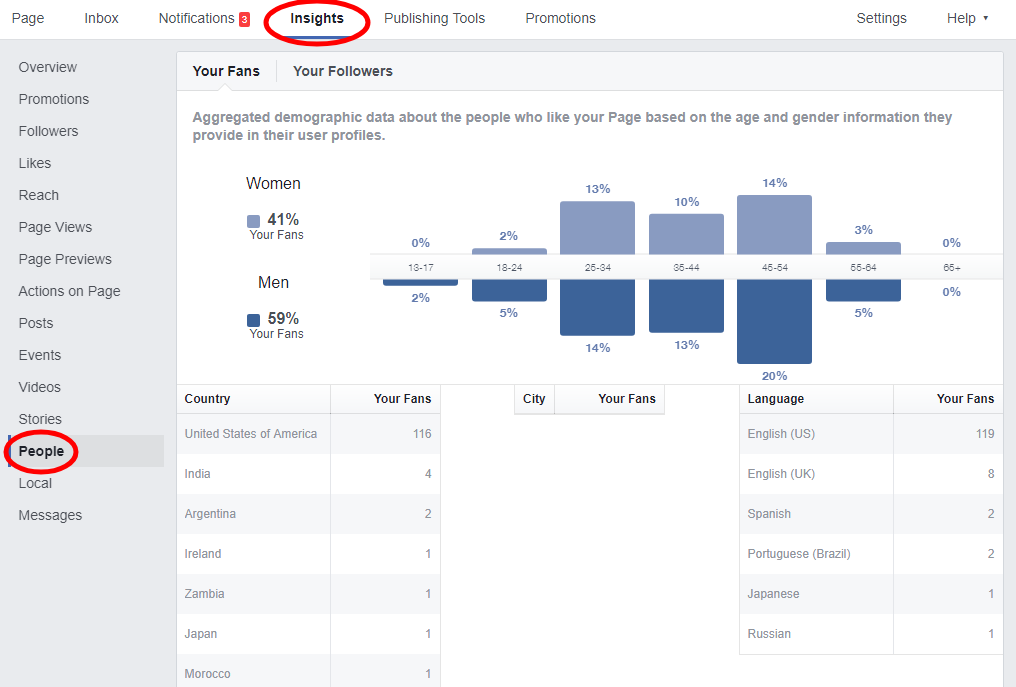
Click on the “People” link on the left nav and you can see a basic breakdown of who “liked” your page, including gender, age, and location. Use these metrics to design your landing page with your most-likely visitors in mind. For example, if the majority of your fans/visitors are Baby Boomers, you might word your affiliate program landing page differently than if your base was purely teens.
1a. Build your affiliate landing page within Facebook
Under “Publishing Tools” on the top nav, select “Forms Library” on the right nav. This will take you to a form builder:

You can create a simple form that can collect multiple fields to generate leads for your affiliate program (or any other sign-up reason). The form will live right in your company’s Facebook profile; you’ll also have the option of designating where the form will live:
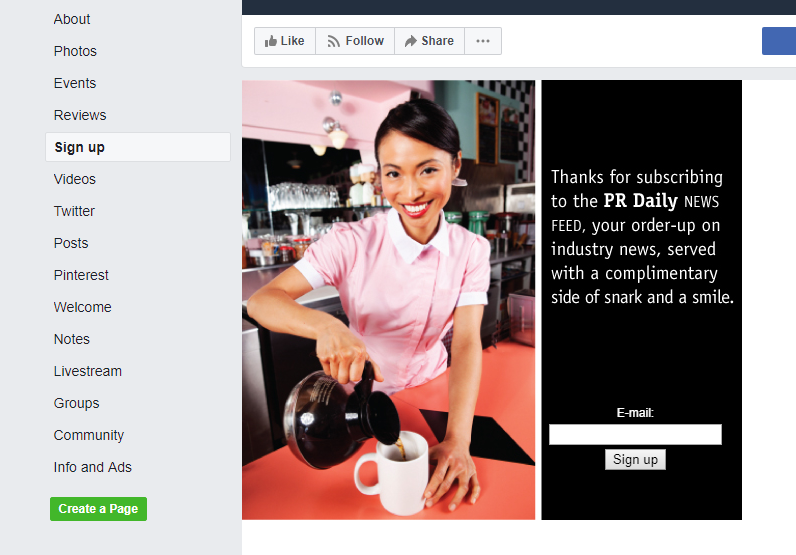
Again, it’s usually better for landing pages to exist outside of Facebook (as you have more creative control), but we’d be remiss if we didn’t mention this option.
2. Promote your affiliate program landing page
Now that the hard work of creating your landing page is done, it’s time to promote it all across Facebook:
Your own business page. Sort of a no-brainer here: you’ll want to post your affiliate offer regularly to your page so your fans and visitors will see it. What’s not a no-brainer is the posts you create around the landing page link, because posting the same thing over and over again is a sure-fire way to be boring and annoy your audience. That’s why you should a/b test multiple posts and track engagement to see which performs better. Switch up the image, the text, even the offer; and see what combinations get the most new sign-ups.
Groups in your niche. If there’s an interest in something, you can bet that there is a Facebook Group dedicated to that niche. Search “running shoes” and there are pages and pages of groups:
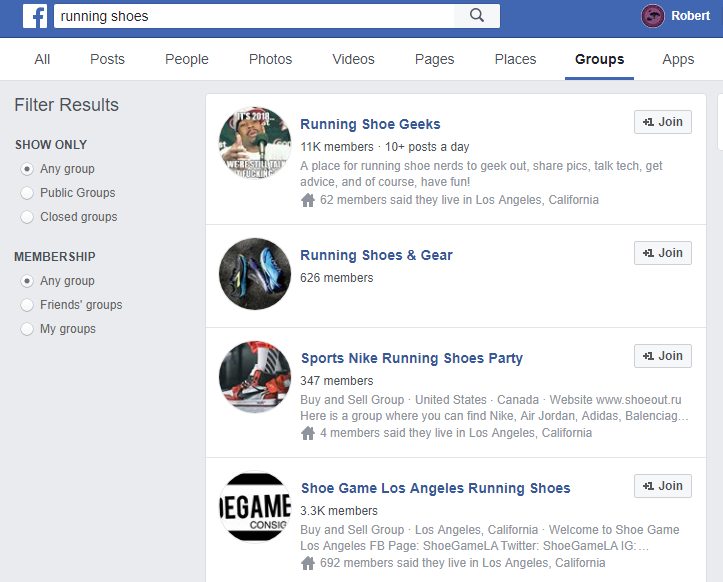
You’ll probably find plenty of groups to post to, but be warned! It’s incredibly easy to do damage to your brand by abusing these groups. Utilizing Facebook Groups is an art form that takes time and patience; they’re not just bulletin boards to post your links and skedaddle.
Val Geisler’s blog has a great post on the do’s and don’ts of posting to Facebook Groups, including:
- Don’t reply to posts with a “I have some ideas. PM me for more info!” kinda answer.
- Don’t cross-post the exact same thing to multiple groups at once.
- Do spark interesting conversation with other humans.
It’ll take time to ingratiate your brand with the fans in these groups, but once you’re in, they can be a great source of quality affiliates.
Start your own Facebook Group. If your brand lends itself to a social element/community, you can create your own group which will give you more liberties to (gently) push your agenda. Moreso than just a tool to gain affiliates, a successful Facebook Group that you moderate is an amazing business move in general… which is why it’s difficult to do. Peruse the groups in your niche and you’ll probably find most of them with just a handful of members.
Still, if you have the time to invest in nurturing a group yourself, you can try your luck. Especially if your niche doesn’t have many Facebook Groups that already exist, this can be a great way to get your message across to the right type of fans would would be thrilled to be an affiliate.
That being said, the odds of success at creating a popular Facebook Group from scratch are directly proportional to how much time and effort you put into social media in general. In our experience, trying to accomplish this is the most time-consuming endeavor a brand can take on any social platform. But for those of you determined to start one, here is an excellent guide just on this topic.
3. Find and contact influencers.
Social listening is a fancy way of saying you read a lot of social media to find out what people are saying. This is a great way to learn about your brand, and to find the social influencers in your niche. They’re the ones with the most likes and shares and comments on their posts on Facebook.
While you can use a variety of free tools to do your social listening, Facebook makes it pretty easy to find these influencers. Say you sell high-end costumes online. You can simply search “cosplay” and use the results that show up under Pages or Group to find these influencers.
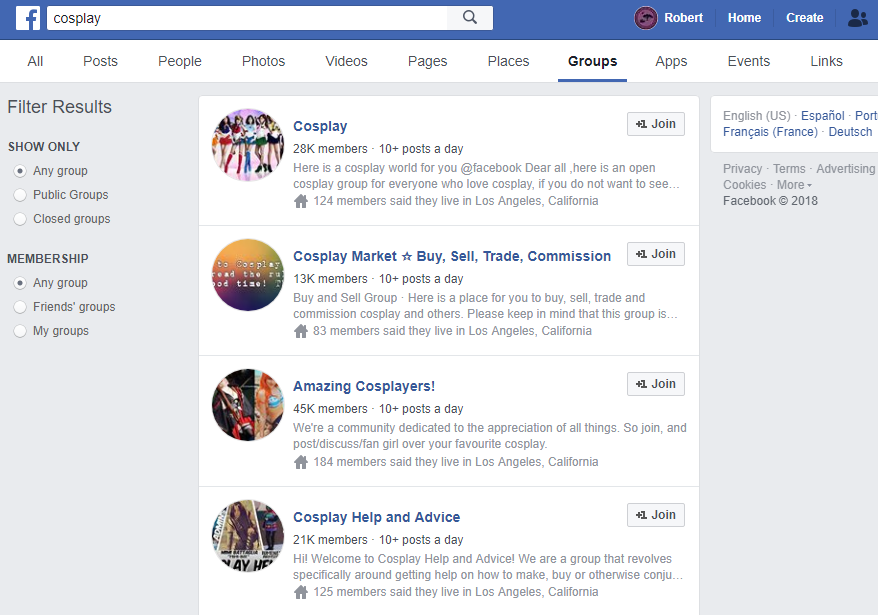
They are often the moderators of groups or the ones with the top comments. They’ll almost always have business pages of their own since personal pages on Facebook have a 5,000 friend limit (and these days, that’s a drop in the bucket for even a micro-influencer). Unless there are hardly any influencers in your niche, you should be able to find a bunch in just a few clicks.
Once you’ve identified them, messaging them via Facebook Messenger can be hit or miss unless you establish a “like-like” mutual friendship on Facebook. If the influencer you want to work with “likes” your business page, the odds go way up of them actually reading your Direct Message (DM), if only because your message won’t be flagged as unwanted spam by Facebook’s filters.
So it’s important to get that influencer’s “like” by liking their page first (if they have one), engaging with their posts/comments, and engaging with him/her even outside of Facebook via Twitter, LinkedIn, and of course email (some of the bigger influencers will post their business email).
Once you’ve made contact, keep it casual and ask if they’d be interested in working with your brand:
Remember, finding the right influencer to work with is a numbers game. Keep at it until you find the right one!
4. Utilizing Facebook Ads for Quick Wins
Like many things in business, spending money can cover over a multitude of sins. The “sins,” in this case, is not building out your Facebook business presence over time. If you’re eager to get the word out that you are looking to add new affiliate partners, Facebook Ads can be your answer.
The simplest way to promote your affiliate program is to create a post about it, with a link to your landing page. At the bottom of your post, you’ll see this:

Clicking “Boost Post” will open up a window with various ad options. While explaining every aspect of Facebook Ads is beyond the scope of this guide, there are a few things you should keep in mind:
- Over half of all internet traffic is via mobile devices. Make sure your ad looks good on a phone by previewing it on the “Mobile News Feed” tab.
- By default, ads will run on Instagram and on Facebook Messenger. If you only want to focus on Facebook proper, make sure you uncheck these boxes.
- Take the time to create the exact audience segment you want to target, as this is a powerful feature of Facebook ads. This will prevent unnecessary spend when the ad shows up for people who have a low chance of becoming an affiliate.
Are Facebooks Ads worth the cost? It all depends on how much you have earmarked for Acquisition Cost (for reps), how competitive your niche is, and how well your landing page converts visitors into signups. Start with a small test of $25 to $50 in one city and see what results you get. Again, running ads is a shortcut. Generally, businesses will see better engagement and higher quality reps who are enthusiastic about your brand by acquiring them organically.
5. Cultivate a Great Facebook Page of Your Own
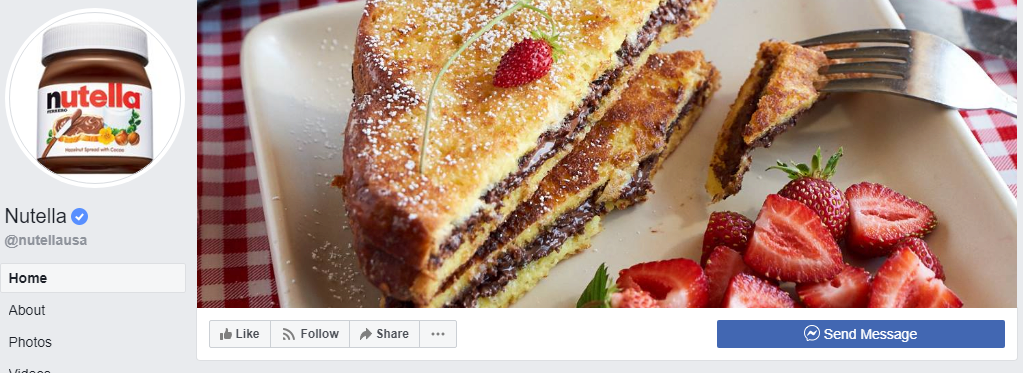
Finally, as we mentioned briefly up top, your business will have a hard time using Facebook as a platform to bring in affiliates if your own business page is lackluster. The more you portray your brand as fun and interesting, it will naturally attract fans who can then become brand reps. Nutella has over 31 million followers on Facebook, and their feed is filled with fun recipes, gorgeous product images, and videos with tips and ideas.
Maybe your brand isn’t quite as delicious as Nutella, but putting your best virtual foot forward on your Facebook page is a key step to garnering attention and finding enthusiastic affiliate partners.
Managing Affiliates with Facebook
If you find many of your new affiliates via Facebook, then it only stands to reason that you can manage them with Facebook too!
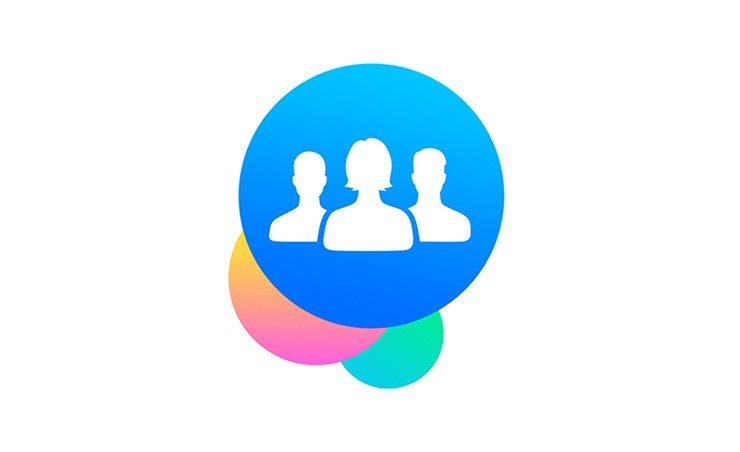
One of the biggest areas of failure for an affiliate program is not providing reps with enough encouragement and support. A private (ie. closed), affiliate-only Facebook Group is a great way to communicate effectively with your growing collective.
While an affiliates-only newsletter is also important, one feature emails lack is interaction between the reps. Creating a private Facebook Group provides an easy-to-use (and free!) platform where your affiliates can virtually mingle, ask questions, provide support, and more.
A group also gives you the ability to post exclusive deals & offers, sneak peaks at new products & services, and answer questions in a way that helps other affiliates who can see your post and refer to it later.
Some other ideas to get the most out of your affiliate-only group:
- Bake it into your affiliate on-boarding. Invite new reps to the group as part of their sign-up & acceptance process. This will help grow your group’s numbers and give newbies a sense of community and exclusivity right away.
- Sticky a FAQ post at the top of this group’s feed. This way, common questions will be answered immediately when they join the group.
- Promote group moderators. Keep an eye out for the most active reps in your group and promote them to being a moderator:
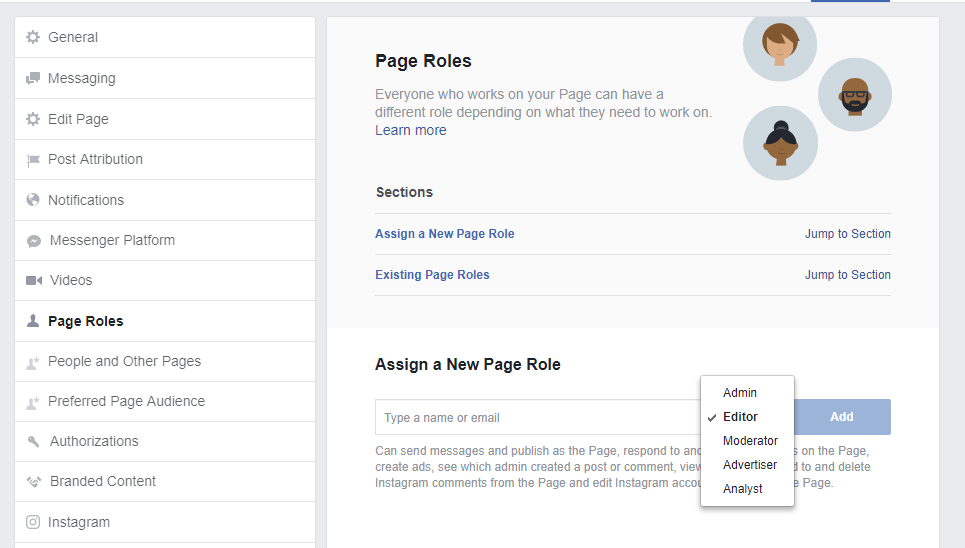
Moderators can delete comments and posts as well as ban other users. If you have a trusted rep, they can almost act as your social media manager in your group.
- Listen and learn. We mentioned social listening previously, and this is a great way to learn what your biggest fans like or dislike about your brand. You might even gain insights for new products or services.
For more information on creating a group, visit Facebook’s Help Center’s page on this topic.
Facebook remains a powerful platform and tool for merchants to find, contact, and manage affiliates. Invest time and strategy into the Big Blue social network and you’ll find that it will be a shot to the arm for your affiliate marketing efforts.



